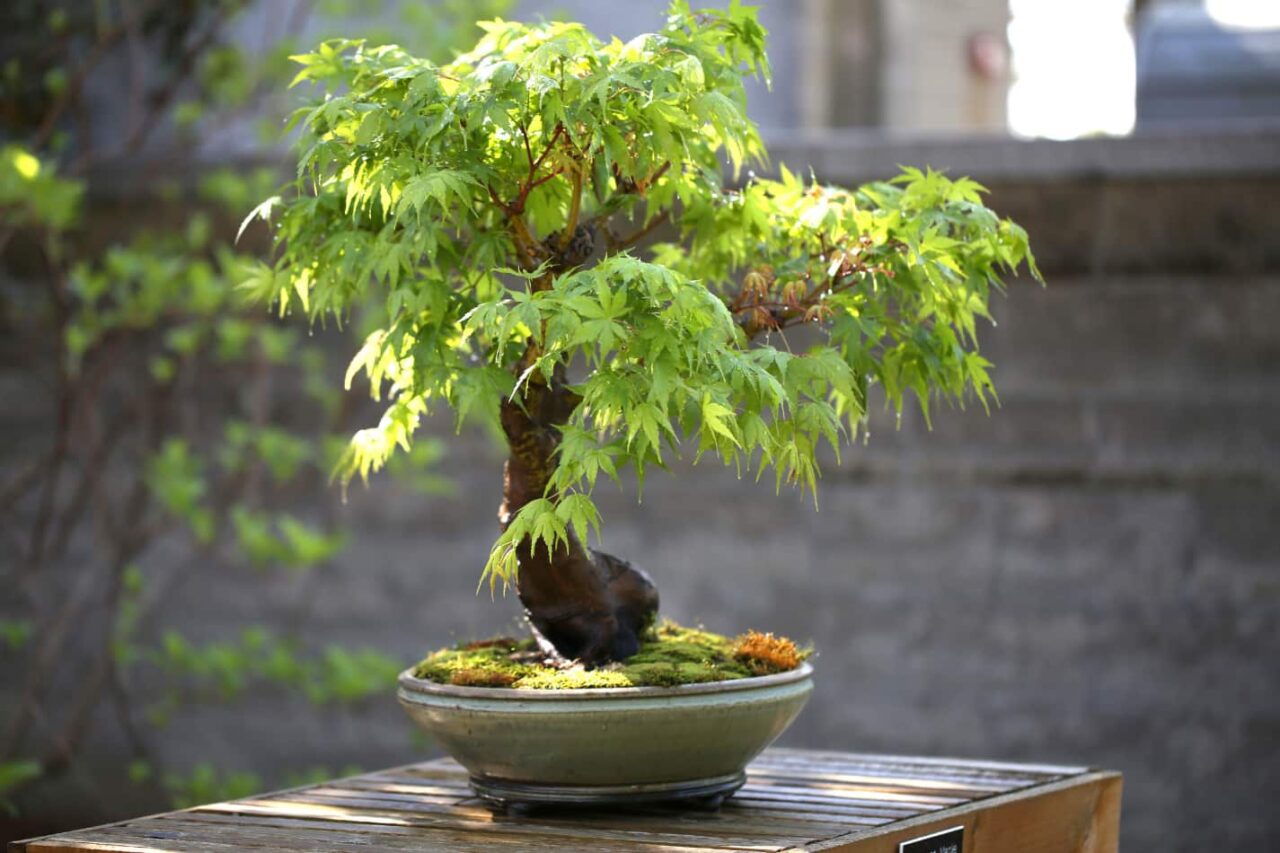Growing a Bonsai tree is considered to be one of the most sophisticated hobbies out there. Taking the responsibility to grow out a bonsai tree and taking proper maintenance of these little beauties are a lot more complicated than one can ponder. Common questions like, “how long does it take a bonsai tree to grow?” and such can linger in the minds of many.
It usually takes around 10-15 years for a Bonsai Tree to be fully grown. On their journey towards maturity, Bonsai trees will rely on constant watering, exposure to sunlight and will need to be trimmed and pampered. All this will ensure the proper growth of a Bonsai tree.
Although a lot of people may find it to be a tiring form of spending time. Some people find solace in the idea of spending years and years growing bonsai trees and looking after their investments till the end of time. If you’re one of the few individuals who have decided to indulge in this exquisite hobby then this article is all yours.

How Long Does It Take for a Bonsai Tree to Mature?
Maturing a bonsai tree from the roots of its seeds will take about 10-15 years to reach maturity. It will take at least four or five years for a bonsai tree to grow large enough. Once it is fully matured, it can be applicable for doing activities like pruning, wiring, trimming, and modifying.
A common question that resurfaces on the internet frequently. Growing and nurturing Bonsais do not count as a pet peeve or a small-time form of work. Some people carry out the procedure of taking care of Bonsai trees almost all through the entirety of their lifespan.
Regardless of size, little or huge, bonsai trees usually fall within this range of time to grow themselves towards maturity. However, not many people like taking this arduous route of starting their journey from scratch. Hence, some people might as well prefer a more convenient route.
Usually, the majority of novice growers begin by buying a mature bonsai from a nursery or inheriting one from a loved one. This head start is quite a remarkable move as when a Bonsai tree is at least 5 years old, it becomes apt for more stylistic shaping and grooming.
Factors that Affect Bonsai Growth
Let’s be direct here, knowing the key elements that dictate a Bonsai tree’s growth is crucial for any novice grower. Hence, without further ado, let’s start naming some of these vital factors that affect Bonsai’s growth.
Location: Choosing your preferred place to grow your Bonsai tree is the first preliminary step that needs to be decided. Usually, you can choose to go to your Bonsai either Outdoors or Indoors. The species of Bonsai is also crucial to decide on where you want to allocate the location since consideration of atmospheric settings is vital.
Type of Tree: Choosing the type of tree you want to commit to growing is also vital. As different bonsai trees have different growth rates and full maturation reaching periods. Usually, different species will have different reactions towards climate and may require extra protection from atmospheric elements.
For example, fast-growing bonsai trees usually require a lot more attention compared to slower ones. On the other hand, many bonsai trees can come in many types such as those that can grow flowers, have particular colors, shapes, or be evergreen, etc.
Pot size and maintenance: As philosophers claim, a mind grows according to the vase it manifests. The same can apply in the case of Bonsai trees. The rate of growth of Bonsai trees is heavily dependent on the size of the pot it resides in. Usually, smaller pots will restrict the amount of root growth and nutrient storage.
As bonsai trees get bigger, you are required to report them to a bigger pot to meet the spacious demands. You will also need to change the soil and put low stress on your bonsai while repotting, only do say repotting when there’s a visible shortage of space and your bonsai is confirmed to be in a dormant state.
Pest-Control: – Insects, both above and beneath the soil, and diseases, generally fungal, are the most prevalent pests harming bonsai. Bonsais are also susceptible to attacks from pests.
Most pests are species-specific, thus detecting and treating most pests requires a thorough grasp of the individual bonsai species. With some minor variations, the same materials and procedures used for other afflicted plants may be used for bonsai.
Thus, diluted pesticides can be used on bonsai trees to keep away nagging pests.
Some Techniques to Make Bonsai Trees Grow Faster
Time is an important factor and not everyone is willing to spend too much time to finally make their Bonsai trees fully mature. Hence, here is a list of a few techniques that will make your wait a bit smaller and help you get results faster.
Thickening of the Trunk: The Thicker you make your bonsai’s trunk, the faster and more stable the core of your tree will be. Having a stable and thick core will allow even distribution of nutrients and result in faster growth. A thick trunk will also make it less susceptible to damages caused by elements.
The two most useful techniques to thicken bonsai trunks are merging and splitting. More information is provided on the links attached.
Looking after it: much like any living being, bonsais need to stay healthy, and in this case means they must be well protected from pests, elements, and foreign particles. If your bonsai shows signs of spots, leaf discoloration, stem mutation, flies, or weakness, then it’s high time for you to treat it.
Balancing the diet: Bonsai trees are quite delicate and need a lot of support when it comes to allocating resources. To prevent weakness in its structure, fertilizers must be used to keep a stable process going on. Fertilizers must contain Sodium, Phosphorus, and Potassium to ensure the fast and healthy growth of your bonsai tree.
Providing sufficient light: Without proper exposure to sunlight, many biological processes will be hindered. Hence, both indoor and outdoor bonsai trees must be supplied with proper lighting.
Signs that Your Bonsai has a Slow Growth Rate
Now, if you’ve never had bonsai before it can be difficult to understand if your bonsai is growing right. Keep a lookout for these signs as they indicate that your bonsai is not growing right.
Yellow leaves: Can happen due to overexposure, overwatering, underwatering, or even diseases.
Spotted leaves: discolored leaves or visible residue of foreign substances is not always good news. Such presence will mean your bonsai is subjected to a fungal infection which is rendering a slow growth rate.
Wriggling movement: If your bonsai starts to wriggle through gentle touch then that’s bad news. If the foundation of its roots is not strong enough to maintain the weight, then fertilizers will be needed to strengthen it.
Circling of roots: Usually, if a pot is too small for a root, then the roots will start to circle around the pot. Suffocation of roots can greatly weaken the bonsai and will require pruning. Hence every few years, repotting is a necessity to avoid this.
Conclusion
That covers pretty much all the basics of how to grow a Bonsai tree to its full maturity. I believe this article has also answered your question of “how long to grow a bonsai?” Thus, I wish you all the best in your ventures ahead.
Thanks for stopping by and good luck with growing your bonsai.






